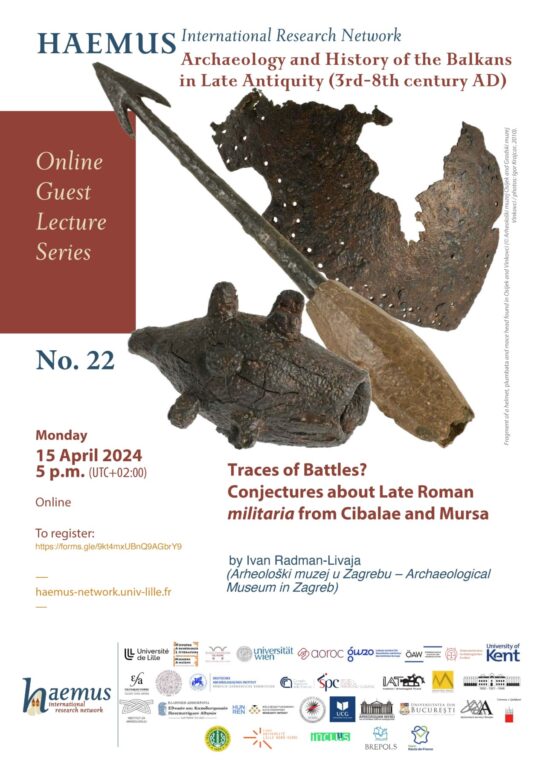Dear Members of the HAEMUS network,
our 22nd Online Guest Lecture will be on the 15th of April, at 5:00 (hour of Paris/Brussels/Rome/etc.) and will be given by our colleague Ivan Radman-Livaja from the Archaeological Museum in Zagreb.
Title: Traces of Battles? Conjectures about Late Roman militaria from Cibalae and Mursa
Abstract: According to written sources, Pannonia was clearly a land of wars in the 4th century. Ironically, the first destructions were not brought by the so-called barbarians, but by the Romans themselves: at the Battle of Cibalae between Constantine and Licinius (8 October 316), then during the war between Constantius II and Magnentius (350-353). The troops of this usurper looted all over Pannonia, conquered Siscia, and led unsuccessful sieges on Sirmium and on Mursa. The Battle of Mursa (28 September 351) went down in history as one of the most terrible of ancient times, with a huge number of casualties, supposedly 30,000 killed on Constantius’ side and 24,000 killed on Magnentius’. As a result of the disorder caused by such civil conflicts, the following decades were the theatre of many barbarian incursions south of the Middle and Lower Danube, especially from the Sarmatians, allied with the Quadi, the Goths and the Alans. It should be noted that the texts relating these events are very incomplete and confusing, but some of these people took advantage of the catastrophic Roman defeat at Adrianople to sack the then-poorly defended Pannonia. These populations might have been pushed back for a moment, but it seems that they were, in the end, allowed to settle in Pannonia, where they began to raid. It seems that Roman settlements were badly hit by these incursions and, with time, it quickly became increasingly difficult to secure a normal urban life. The general instability that took hold in the region, the severing of trade routes, as well as the decline of agriculture and economy undoubtedly induced the gradual desertion of the cities. The civil war between Magnus Maximus and Theodosius I (387-388), in which both sides hired barbarian mercenaries, finally announced the end of Roman Pannonia, as the soldiers plundered widely, and Sisca became the location of the decisive battle. Thus, the 4th century ended up with the region being ravaged. Is there some archaeological evidence for the information provided by ancient authors? In fact, not as much as we would expect, but this paper will try to evaluate the data from the written sources, by presenting the relevant archaeological record possibly pertaining to the historical narrative.
To register: https://forms.gle/9kt4mxUBnQ9AGbrY9
Best wishes,
Dominic Moreau
(for the Steering Committee of the HAEMUS IRN)


